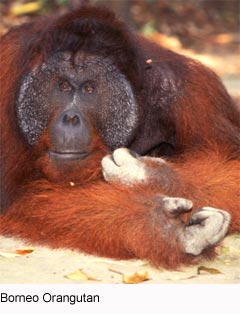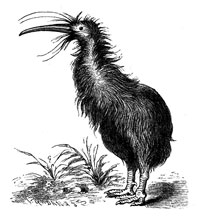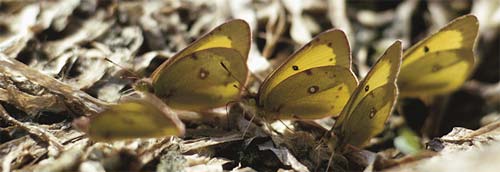Modern Day Heroes: Conservationists can preserve diversity of life on Earth by applying up-to-date scientific knowledge to help solve environmental problems. Here’s how: they work to protect ecosystems, plants and animals, and they promote efficient use of renewable resources to reduce pollution. There are many different ways that conservationists can achieve these goals, and anything method works is valuable:
1) Understand: Advancing wildlife research and knowledge.
2) Protect: Protecting whole ecosystems (including plant and animal populations).
3) Waste Not, Want Not: Promoting efficient use of renewable resources.
Understand: Advancing wildlife research and knowledge.
 Conservation efforts increase knowledge of new species so habitats are not destroyed before humans know that their inhabitants exist. Conservation efforts increase knowledge of new species so habitats are not destroyed before humans know that their inhabitants exist.
For example, conservationists discovered 52 new species of animal and plants in the south-east Asian island Borneo between 2005 and 2006, including 30 species of fish, 2 new tree frogs, and 16 unusual species of ginger!
The remote forests of Borneo are among the most important centers of biodiversity on Earth. Thanks to recent discoveries, conservationists have more knowledge of Borneo's animal inhabitants and how to protect them.
In addition, conservationists must understand the large economic, political, natural, and cultural forces that influence animals and the environment. By increasing the world's knowledge base, conservationists increase the odds that we'll figure out how to address the problems facing endangered animals!
Protect: Protecting ecosystems (including plant and animal populations).
Natural Reserves & Breeding Programs: Conservationists protect plant and animal species by helping to establish natural reserves and breeding programs.
 For example, while the kiwi (the cherished mascot of New Zealand) would be in For example, while the kiwi (the cherished mascot of New Zealand) would be in
grave danger without conservation efforts. Conservationists are working to create predator-free reserves on small islands and fenced areas on the mainland to protect
the birds. A program called Operation Nest Egg collects wild kiwi eggs and rears them
in captivity or predator-free reserves. This program has increased chick survival rates from 5 to 85 percent!
Conservationists also raise money,
and support programs and laws that protect species and their habitats. Sometimes, conservationists focus their attention on "umbrella species," famous endangered animals that garner lots of interest from the public and lawmakers.
When “umbrella species” are protected, rangers and scientists take into account other species that share their habitats, often saving them as well. For example, when rhinos are protected, so are the mammals, birds, reptiles, fish, insects, and plants that live among them. In addition, by focusing on so famous an animal as the rhino, conservationists can raise more money and awareness for the rhino’s entire habitat!

Waste Not, Want Not: Promoting efficient use of renewable resources.
Conservationists also work to promote "sustainable resource use." Sustainable resource use means that, when people harvest natural resources, they leave enough to ensure that the depleted populations can recover. Through sustainable resource use, humans can save many of the world’s endangered animals! For example, Blue Whales were brought back from the brink of extinction through an international agreement limiting the amount of whale harvesting.
A recent report in Science Magazine suggests that conservation efforts drastically increase national economic resources dramatically! For example, the paper states that investing $45 billion in habitat preservation would yield an annual return of over $4.4 trillion in “economic services” like water filtration and climate regulation: a 100 to 1 return on the investment! In addition, conservation efforts bring in ecotourism dollars, and generate local jobs! In contrast, destroying ecosystems for economic gain typically only benefits a select few individuals.

|

